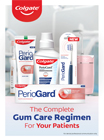Upcoming Events
1. Article Title.
2. Author Details.
3. Abstract.
4. Keywords.
5. Corresponding Author details.
March 2019
Volume : 35
No.: 1

Dr. Sanjay Prasad,Dr. Nabarun Chakraborty,Dr. Subhajit Nandy
Abstract: Speech is the basis for communication between individuals. Phonetics is a fundamental feature of prosthetic rehabilitation and if not adequately considered in the treatment plan for a fixed or removable reconstruction, satisfactory results cannot be obtained as prosthesis can modify phonetics, even if it is functionally and esthetically well designed. Also, significant is the fact that speech mechanism is highly susceptible to degenerative diseases. Thus, came phonetic dentistry or gnathophonics. As dentists, it is our duty to not only restore the form and function of missing tooth and oral structures, but also phonetics, for the prosthesis to be physiologically and functionally sound. This paper deals with the considerations to be kept in mind while fabricating a dental prosthesis to fulfill the 3rd criteria of the 3 objectives of denture rehabilitation- mechanical, esthetics and phonetics.
Dr. Raju Biswas,Prof. (Dr.) Subrata Saha,Prof. (Dr.) Subir Sarkar
Abstract: There is a continuous evolution in the field of pediatric endodontics resulting in a paradigm shift from traditional hand files to rotary files for canal preparation in primary teeth. Canal preparation plays an important role on the success of the pulpectomy procedure. On literature search, there are numerous instrumentation techniques for performing root canal preparation in primary teeth. The present article highlights on the use of different rotary file systems for root canal preparation in the primary teeth.
Dr. Paromita Mazumdar,Dr. Shromi Roy Choudhury,Dr. Debojyoti Das,Dr. Lugu Buru Murmu
Abstract: Minimally invasive dentistry is a conservative philosophy based on sound scientific principles.9 It is the need of the hour as the conventional 'extension for prevention' is being challenged and the more conservative forms of operative intervention are being recommended. An innovative approach called “chemomechanical caries removal” technique which is minimally invasive and painless has been developed to overcome the shortcomings of traditional approach of caries management. This method of caries removal involves chemical softening of carious dentin followed by its removal with gentle excavation
Dr. Sumit De,Prof. (Dr.) Samiran Ghosh,Prof. (Dr.) Amit Ray,Prof. (Dr.) Soumitra Ghosh
Abstract: Distraction osteogenesis of the edentulous alveolar ridges may be considered an alternative to other augmentation oriented surgical techniques. It is now being widely used for treating severe forms of alveolar ridge atrophy, especially before the placement of dental implants. Vertical Alveolar Distraction System is a vertical alveolar distraction device used for edentulous ridges. In this study, the patient came to us with a chief complain of intra-oral swelling in symphysis region, which was diagnosed as dentigerous cyst and enucleation done followed by platelet rich fibrin placement and recalled him after 3months. After 3months the radiograph revealed uneven healing along with inadequate alveolar bone depth for implant placement. Eventually out of many options we decided to go for Vertical osteogenic alveolar distraction (VOAD), which allows for the augmentation of the alveolar ridge for the placement of dental implants in atrophic alveolar ridges and after 6 months of reviewing we finally got adequate alveolar bone depth for implant placement and we placed the implant. No complications related to the prosthodontics restoration were observed.
Dr. Ritoban Saha Bhowmick,Dr. Sumit De,Prof. (Dr.) Samiran Ghosh
Abstract: Condylar fractures are the most common fracture site of mandible. open reduction and internal fixation (ORIF) provides better outcome to those of conservative treatment for displaced condylar fractures. The risk of facial nerve palsy is one of the main Post-operative complications to ORIF. The purpose of this study was to determine the efficacy of TMAP approach in terms of rate of facial nerve injury (FNI) when performing (ORIF) of mandibular condylar fractures in comparison to other extraoral surgical approaches.
Prof. (Dr.) Amal Kumar Chakrabarti,Dr. Anirban Shome,Dr. Swapan Kumar Majumdar,Dr. Divya Chadda,Dr. Rup Kumar Das,Dr. Malay Kanti Bachhar
Abstract: Class III malocclusions are considered to be one of the most difficult problems to treat. Their causes are multifactorial including genetic and/or environmental factors. Class III malocclusions are generally classified into 2 categories: skeletal and dental. The diagnosis is important due to the different treatment approaches pertaining to varied malocclusion and age. Generally, a dental class III can be treated with orthodontics alone, while a true skeletal class III requires a combination of orthodontics and surgery. The following is a case report of an adult male patient with skeletal Class III malocclusion who was treated by ortho-surgical approach in Department of Orthodontics in collaboration with Department of Oral and Maxillofacial Surgery, Dr. R. Ahmed Dental College and Hospital, Kolkata.
Dr. Srimanta Banerjee,Prof. (Dr.) Abhijit Niyogi,Dr. Surendra Nath Tudu,Dr. Amrita Ghosh
Abstract: Aim- To report hybrid instrumentation method in double-curved mandibular premolar. A 48-year-old male reported to the Department of Conservative dentistry and Endodontics of Dr. R .Ahmed Dental College and Hospital with pain in relation to 35. The root of 35 were doubly curved .The first attempt to negotiate was hindered at the level of the first sharp curvature. The distance from the coronal reference point to this point was determined as the coronal zone. Initial coronal debridement was done with a rotary Protaper S1 file in conjunction with stainless steel hand files to remove pulpal tissues. Once the desired coronal length was reached apical curvature was prepared by Hyflex CM up to 25/04. Patency was maintained throughout the procedure. Chemical disinfection and smear layer removal was done using positive syringe irrigation with 5.25% NaOCl solution and 17% EDTA solution, delivered through a 30-Gauge needle. With a corresponding size gutta percha point the canal was obturated.
Prof. (Dr.) Amal Kumar Chakrabarti,Dr. Bides Bhaumik,Dr. Kesang Drolma,Dr. Anusree Paul
Abstract: Class III malocclusion is one of the most challenging problems to be treated in orthodontics. Several treatment protocols have been advocated for the correction of class III malocclusion. The effects of facemask therapy have been well documented in literature. Although treatment in early mixed dentition period gives better results, treatment results can also be successful when used during late mixed or early permanent dentition. Following is a case report of a 12 year old female patient who was treated for class III malocclusion using facemask therapy.
Dr. Koyel Bhowal,Prof. (Dr.) Samiran Ghosh,Dr. Ishan Roy Choudhury,Dr. Soumitra Ghosh
Abstract: Unicystic ameloblastoma is a benign, locally invasive odontogenic neoplasm of young age which can develop during the stage of tooth formation. Radical approaches have effects on the physical and psychological development of a growing young patient. Conservative surgical management may be a viable option to reduce morbidity and increase the probability of uneventful secondary healing and bone regeneration in the younger population. The use of osseointegrated dental implants for rehabilitation is advisable, as it allows the recovery of the masticatory function. In this article, a case report has been elaborated where an ameloblastic lesion was managed in conservative approach. Complete follow up of 10 years had been done in this case. After completion of the healing of surgical site, implants were placed in that region without any need of a bone graft for occlusal rehabilitation purpose.
Prof. (Dr.) Amal Kumar Chakrabarti,Dr. Heena .,Dr. Rup Kumar Das,Dr. Aman Kumar Sharma,Dr. Bides Bhaumik
Abstract: Skeletal class III malocclusion is one of the most difficult problem to treat. It has multifactorial etiology. Genetics, racial, environmental, habitual posture are the factors that can be involved in the etiology. Treatment of skeletal class III problem due to maxillary deficiency is usually done by maxillary protraction with facemask in young children. Although the ideal treatment timing for this kind of approach is before the age of 8-9 years in deciduous and early mixed dentition, but it is also seen to be effective in late mixed dentition also and less effective thereafter in early permanent dentition. The following case report shows treatment in a young girl in late mixed dentition period with moderate skeletal class III discrepancy using RME and facemask.
Dr. Soumadip Niyogi,Dr. Anuradha Barma,Dr. Jayanta Bhattacharyya,Dr. Samiran Das,Dr. Soumitra Ghosh,Dr. Preeti Goel
Abstract: Aim: Fabrication of a hollow bulb closed obturator for partial maxillectomy patients. Background: The unprecedented communication of the oral and nasal cavity post maxillectomy leads to decrease in intra oral air pressure and gross amount of articulatory deficiencies and nasal air emission. This constraint can be overcome (within limits) by expanding the oral cavity volume to absorb the accumulating air. Prosthetic intervention, with maxillary obturator prosthesis is necessary to restore the contours of the resected palate and to recreate the functional impairment from a meticulous standpoint. Case Description: In this case report the use of a wax mould to duplicate the hollow space of the defect with a very less time consuming and uncomplicated process through a single flasking process has been described. Conclusion: This case report gives an insight as to how the bulb portion of the obturator can be hollowed out with ease and less constraints. Clinical significance: Light weight of the hollow obturator allows a near about absolute eradication of all articulatory deficiencies, improvement in speech intelligibility thereby reinstating back the physiologic and psychologic well-being of the patient without compromising on the retention and stability of the prosthesis.
Dr. Abhijit Das,Dr. Subhapriya Mandal,Dr. Debasis Mitra,Prof. (Dr.) Himadri Chakrabarty,Prof. (Dr.) Abhijit Chakraborty
Abstract: For esthetic/cosmetic demands and root hypersensitivity associated with gingival recession, root coverage or gingival augmentation coronal to recession is a challenging procedure in the field of periodontal plastic surgery. Various techniques used for root coverage procedure with its several important surgical advances in past decades. Subepithelial connective tissue graft with pouch and tunnel technique shows predictable result due to minimal incision and flap reflection, provide abundant blood supply to the donor tissue, and intimate contact of donor tissue to the recipient site. This case report shows the success of pouch and tunnel technique when it is used for multiple root coverage in Miller Class-I and Class-II gingival recession in maxillary esthetic region.
Dr. Asish Kumar Barui,Dr. Riju Das,Dr. Abhisek Chowdhury,Dr. T.K. Giri,Dr. S. Mukherjee
Abstract: Loss of tooth is a psychosocial trauma for an individual. It adversely affects normal oral functions and poses a significant cosmetic concern for the patients. Fortunately in modern dentistry there are plenty of options available to replace a missing tooth that vary according to clinical scenario. Due to ease of use and favourable long term results, conventional fixed partial denture represents most popular treatment today. But often we encounter few patients seeking fixed prosthesis with some clinically compromised situations where conventional FPDs cannot be executed. Management of these cases can be done by incorporation of modified techniques in order to achieve ideal aesthetic results meeting the expectations of the patients. This present article describes two such clinical cases where patients were rehabilitated by fixed prosthesis using unconventional approach.












